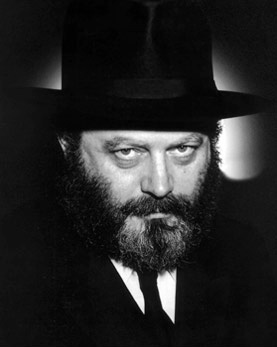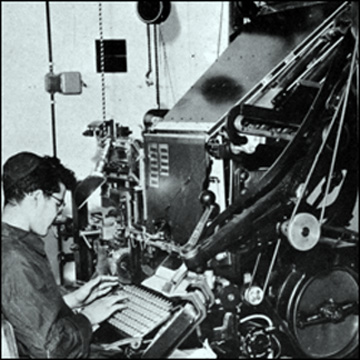Kehot, Chabad Publishing House.... Godliness and Hafatzat Ma’ayanot Chutzah
When Rabbi Menachem Mendel Schneerson arrived in the United States in 1941, his father-in-law, the sixth Lubavitcher Rebbe, Rabbi Yosef Yitzhak Schneersohn, asked him to head the new Chabad publishing house, Kehot. It was an inspired decision. A prodigious scholar and bibliophile, the future Rebbe devoted himself passionately to the task of spreading the “wellsprings” of Hasidic teaching “outward” (hafatzat ma’ayanot chutzah). Although Rabbi Schneerson’s charismatic personal leadership and the global network of shluchim, or emissaries, he established as the seventh Lubavitcher Rebbe have received a great deal of attention in the recent discussions occasioned by his 20th yahrzeit and the recent biographies by Joseph Telushkin, Chaim Miller, and Adin Steinsaltz, his work as an editor and publisher has been relatively neglected. Yet, it is in the light of this work that some of his most ambitious lifelong goals must be understood.

Rabbi Menachem Mendel Schneerson, 1954. (Courtesy of TheRebbe.org/Chabad.org.)
Chabad is often described as the most intellectual of the Hasidic schools that first arose in 18th-century Eastern Europe. While other Hasidic groups are designated today almost exclusively by the names of their towns of origin— Kotzk, Breslov, Chernobyl—only Chabad has come to be known for the distinctive form of contemplative divine service it promoted, as well as the town (Lubavitch) in which it once flourished. The term Chabad is an acronym for the three cognitive faculties (Chochmah, Binah, and Da’at) that link the human to the divine in Jewish mystical psychology. While other Hasidic schools have tended to concentrate on emotional experience, especially in ecstatic prayer, Chabad leaders have always insisted that feeling follows thought. They have remained focused, moreover, on the radical demand to make “godliness,” as Rabbi Schneerson would later write, “visible to eyes of flesh.”
The contemplative study of Chabad texts was meant, among other things, to make the absolute contingency of the world upon divine vitality perceptible to the reader. This, in turn, would help to make this “lower” world a fitting “habitation” (dirah ba-tachtonim). Yet while the Tanya, written by the movement’s founder Rabbi Schneur Zalman of Liadi, and a few other key Chabad texts became well-known even outside of Hasidic circles, most of the tracts written by successive generations of Chabad leaders remained in manuscript form, passed from hand to hand as precious heirlooms. On his deathbed the fifth Rebbe, Rabbi Shalom Dovber Schneersohn, reportedly told his son and successor, “my soul I return to my Maker, the ksavim [manuscripts] I leave to you.”
Only a handful of classic Chabad texts were widely available for study when Rabbi Schneerson assumed the leadership of Kehot in 1942, but a steady stream of new publications has been emerging ever since. He also was perhaps the first Orthodox publisher in America to understand the importance of producing well-made, aesthetically pleasing (though inexpensive) books. Initially at his father-in-law’s instruction he also began annotating many of the texts himself with attention to sources, parallel passages, and variant manuscripts, but even in those early years, he was thinking popularly as well. In the 1940s he commissioned comic book artist Michel Schwartz to create a character based on Brooklyn Dodgers shortstop Pee Wee Reese in the visual style of Chester Gould. Schwartz recalls the Rebbe’s specific instructions: “Ess zul oys’zehn vee Dick Tracy.”

Dick Tracy poster.
The energy of modern Chabad stems in large part from the way in which Rabbi Schneerson managed to combine the distribution and publicity-minded ethos of American publishing with ritual models embedded deep in Chabad theology. Among the various “missions” ormivtzoyim with which he charged his emissaries over the years was the bayit ma’ale sefarim campaign to literally fill Jewish houses with Jewish books. Jewish literacy is an obvious goal for any outreach movement, but the Rebbe’s passion for publishing was also intrinsic to his whole theological and messianic posture. The campaign to print Rabbi Schneur Zalman’s Tanya in every conceivable language might, for instance, have been explained by a desire to make its teachings as widely available as possible (the Rebbe is said to have celebrated particularly when it was first published in Braille), but the attempt to print it in literally each and every city was not about distribution. Nor was this the motivation for asking his Hasidim to stand on street corners with handheld mimeograph machines. It was, like the more famous effort to get all Jewish men to put on tefillin, an attempt at ritual efficacy, an attempt to improve the world and promote redemption through incremental accretion of “good deeds” and ritual acts. When Rabbi Schneerson authorized the publication of his predecessor the fifth Rebbe’sHemshech Ayin Beis in 1977, written more than 60 years earlier,he required the Hasidim to each contribute a dollar toward the effort. This was not about defraying the costs of publication. It was a declaration of shared responsibility for the momentous decision to publish a work of such transcendent holiness “before its time.”
One of the only books Schneerson ever authored in his own hand—as opposed to the many volumes of his public teachings that were memorized and written down by others—was a compendium of his father-in-law’s sayings and customs. This little Yiddish and Hebrew compilation, titled Ha-yom Yom, was first commissioned by R. Schneerson’s father-in-law as a “calendar” of daily customs and pithy encapsulations of Chabad doctrine that seems to have been designed to help Hasidim stay Hasidim in the tumultuous and enticing New World. But Rabbi Schneerson also included whole entries dedicated to the mundane details of the publication and emendation of classical Chabad texts. One of the less technical examples is an entry for 11 Tammuz, which reads simply, “In the Zholkva edition of Tanya that appeared in the year 5559 [1799], the first version of Iggeres Ha-Teshuvah [Letter on Repentance] was included. It was not divided into chapters and there are considerable variations in the content of the letter.” Publication history was apparently also sacred history.
Timing in publication can indeed be everything. Under the Rebbe’s guidance, Kehot would often release a discourse or ma’amar in pamphlet form on the anniversary of its original delivery or in response to a spiritual need of the moment. Ha-yom Yom repeats in several entries that Jews should recite words of Torah when walking down the street in order to “purify the air,” but R. Schneerson also quotes his father-in-law as saying that each rebbe had a specific teaching or discourse to which he would return periodically when he felt such purification was required. For the founder of Chabad, Rabbi Schneur Zalman, that was a teaching referred to as Hechaltzu, which was expanded upon by several of his successors. The most significant of these elaborations was by the fifth Rebbe, R. Shalom Dovber Schneersohn, who composed an extended discourse on the relationship between interpersonal ethics, especially accommodating others, and the mystery oftzimtzum, or divine contraction. Originally delivered orally in 1898 as a response to communal infighting among Hasidim, it was ordered reprinted on its 50th anniversary by R. Shalom Dovber’s son and successor Rabbi Yosef Yitzhak, who also asked that it be annotated by his own son-in-law and eventual successor, Rabbi Schneerson. There is a multigenerational quality to Chabad publishing that links each Rebbe to his successors and predecessors as well as his followers.
Such connections can be surprisingly intimate. There is a story that the fifth Rebbe once saw his young son sleeping and wanted to kiss him but refrained. Instead he sat down and wrote an essay, which he later presented to him with the words, “This is a Hasidic kiss.” The intimate sense of connection between people through texts in Chabad is one reason that the Rebbe’s commitment to modern publishing never diminished his sense of the sacred aura of handwritten manuscripts or even printed volumes that were once read by the movement’s leaders. Two of the most personally vexing dramas that played out during Rabbi Schneerson’s lifetime were both disputes over the disposition of his father-in-law’s massive library. Some 15,000 volumes of Rabbi Yosef Yitzhak’s library were seized by Soviet authorities after he was exiled in 1928, and they remain in Russia today, despite decades of diplomacy. Much later, in 1984, Rabbi Yosef Yitzhak’s grandson claimed part of the remaining library as an inheritance and sold several volumes including a rare illuminated haggadah. The case eventually went to court, and he was forced to return the books. In both cases R. Schneerson made it plain to followers that his manifest distress over the integrity of his father-in-law’s library was about far more than legal or financial considerations. The missing books were not just symbols of his father-in-law’s position as leader, but something like literal embodiments of his spiritual vitality in material form.
This is less surprising than it might sound. Rabbi Schneur Zalman of Liadi’s teacher the Maggid ofMezheritch once taught that all material objects are nothing but signposts or portals—tziyunim—for the divine vitality that pulses through them. This is the basis for the ideal of divine service through physicality that is the hallmark of Hasidism in all its forms. But books, and especially sacred books, are different, because their vitality lies so much closer to the surface. Hasidim say that when Rabbi Levi Yitzhak of Berdichev first held a copy of Tanya in his hands all he could say was “light,” because that is what he saw. He is also said to have expressed his surprise that Rabbi Schneur Zalman could “put so great a God into such a little book.” It is the capacity of such books to hold both human and divine vitality that makes them subject, like people, to exile and redemption, and this helps to explain why the return of his father-in-law’s library became such a vital redemptive project for Rabbi Schneerson. (It also helps explain the significance of bringing the Tanya to every city and printing it on street corners. Publishing, Rabbi Schneerson once noted, is aptly rendered in Hebrew as “bringing to light.”).

Laying out pages at the printing press in Kfar Chabad, Israel. (The Menachem Wolff Collection/Lubavitch Archives.)
The redemptive significance of publishing goes back to the very origins of Chabad. When Rabbi Schneur Zalman of Liadi was imprisoned in St. Petersburg on suspicion of treason in 1797, he reported a dream in which his teacher the Maggid and the Ba’al Shem Tov both informed him that his arrest was due to the opposition that his openly mystical teachings had aroused in the heavenly realms. Those realms were not alone in expressing their discomfort; R. Schneur Zalman was also bitterly criticized by many of his contemporaries for making mystical secrets so widely accessible. The discomfort extended to some of his most central teachings, including his forceful interpretation of the biblical phrase “There is none but [God],”ein od milvado, to which he added the emphatic mamash, “really,” to emphasize the utter contingency of the created world upon God. So it was significant that in his dream the Maggid and Ba’al Shem Tov also told him that his release from prison would mean that he should press forward with his radical agenda. Hasidim hearing this would have known that the Ba’al Shem Tov himself once reported a dream conversation with the Messiah who, when asked when he would come, replied that he would come only when the “wellsprings” of the Ba’al Shem’s own Hasidic teaching were spread outward.
Chabad has always considered itself the best and most authentic vehicle of this redemptive process. In an explanatory note to the recently published English edition of Schneerson’s Ha-yom Yom we learn that when the fourth Rebbe of Lubavitch complained as a boy to his father that the Messiah had not come on a certain promised date his father replied, “but this is the year the book Likkutei Torah was published!” That the publication of an important Hasidic work, even one by the movement’s founder, could be invoked as a partial fulfillment of messianic expectations, speaks volumes.
The date of Rabbi Schneur Zalman’s release from prison, 19 Kislev, is still celebrated as a major holiday in Chabad. In recent years it has frequently been accompanied by the release of major new publications and sales. In Jerusalem, this year I noticed that the Chabad book fair at the National Convention Center has become a magnet for Hasidim and other Orthodox Jews of all stripes, including many whose ancestors violently protested R. Schneur Zalman’s teachings. This would scarcely have been possible if Menachem Mendel Schneerson had not become Chabad’s publisher-in-chief. Indeed, publishing was in retrospect a natural vehicle for a bookish and introverted young scholar like Rabbi Schneerson, who was nonetheless destined to play a major role in 20th-century Jewish life.
There is a sense of ambivalence in parts of Chabad today over the direction the movement should take despite (or perhaps because of) its impressive continued growth in the 20 years since Rabbi Schneerson’s passing. Though much of the attention from outsiders has focused on the schism between messianic purists (a few of whom even protested the recent yahrzeit observance because of what it implied about their Rebbe’s passage from this world) and Chabad’s more pragmatic institutional core there is also a different, arguably deeper, tension at work. It is the tension between “corporate Chabad’s” global outreach network and the old spiritual quest for inwardness through study and prayer. This isn’t just a struggle between different camps; it is frequently expressed as ambivalence on the part of Hasidim who continue to feel the call of both values but must find their way forward today without the demanding and insistent presence of their Rebbe. The apparent paradox of an intellectual, spiritually demanding Hasidism elaborated alongside every kind of popularization—works of breathtaking mystical scholarship alongside “Dick Tracy” knock-offs—may have seemed like less of a contradiction when the Rebbe was present to bridge those worlds in his own person.
No comments:
Post a Comment